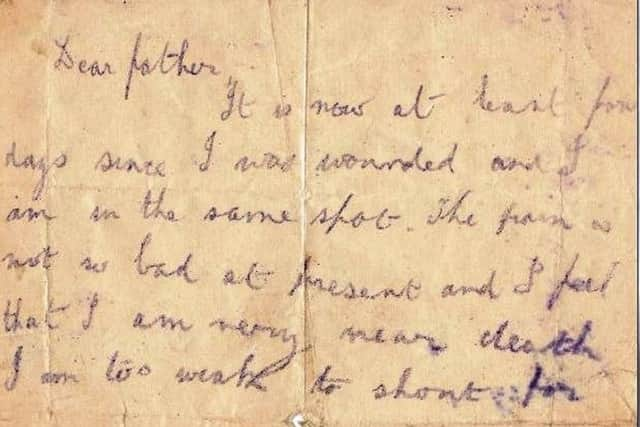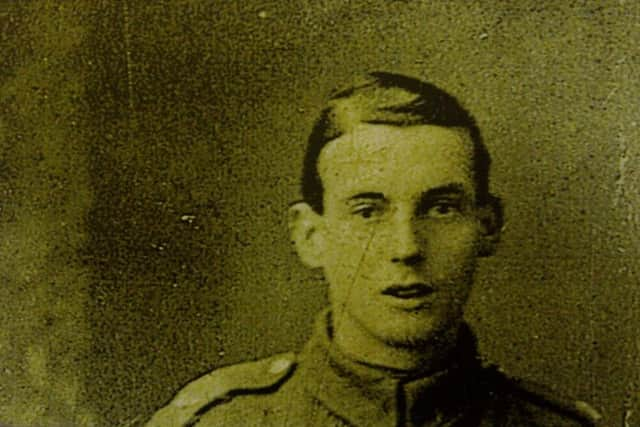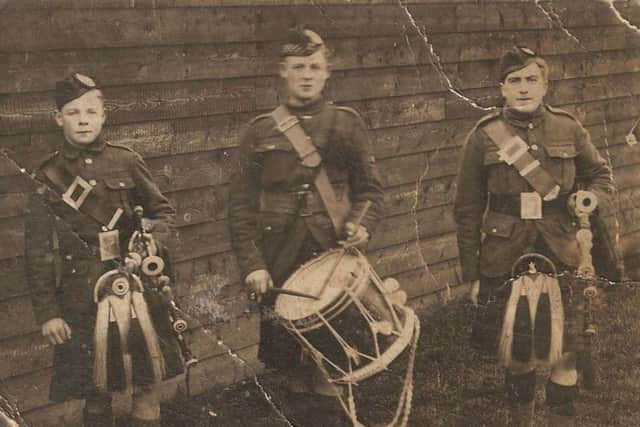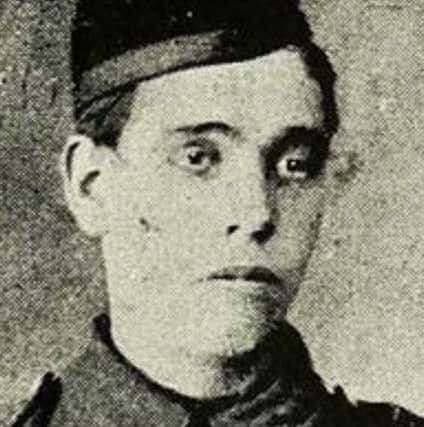Armistice 100: '˜the rest have all died..I'm getting weak' final note from WW1 Scots soldier to father
Private John Macadam of the Queen’s Own Cameron Highlanders penned the note to his father following the Battle of Festubert in the Artois region of France in May 1915.
“Dear Father, It is now at least four days since I was wounded and I am still in the same spot. The pain is not as bad at present and I feel that I am very near death,” the letter, held by the Highlanders Museum at Fort George near Inverness, says.
Advertisement
Hide AdIt adds: “I am too weak to shout for the stretcher bearers any more, they are too far away to hear me and I’m cut off from my own lines by ditches.


“I wish I could see you all before I die but God’s will be done. I think I am the last of the Camerons in the field alive. The rest have all died or else reached safety. I am quickly getting weak so good-bye father, good-bye all.
“From your dying son John, pray for me.”
The journey from boy to man had been short, rapid and brutal for Private Macadam, who died on 21 May 1915, and this young solider was not alone in fighting for King and Country before turning the age of 18.


It is estimated the British Army recruited 250,000 boys under 18 during the First World War and the history of the Scottish regiments are peppered with accounts of those minors who slipped under the wire.
Some knowingly signed up underage boys if they were desperate to join the fight amid a climate of patriotism and adventure.
Trevor Royle, military historian and author of Flowers of the Forest, Scotland and the First World War, says boys making up their age in order to enlist was “common” in the early years of the conflict.
Advertisement
Hide Ad“It was really done because so many men wanted to get into uniform and so they put on their age. You have to remember that back then, it was hard to get abroad, there was no Ryan Air or package deals. The chance to get to France, Egypt... well, it was seen as an adventure. You didn’t want guys coming back and telling their stories and you weren’t there.”


Mr Royle suggests that recruiters “turned a blind eye” to under age soldiers at times. Checks could be lax in the early days of war, if carried out at all.
Advertisement
Hide AdCharles Mcleod Hendry from Arbroath was just 15 at the outbreak of the First World War but was able to sign up to the Black Watch and fight in France and Flanders. At more than 6ft tall, his stature allowed him to pass through recruitment.
Two years later, Private Hendry was buried by a shell explosion at the Battle of the Somme and endured a shock so severe that he was discharged in July 1917 and sent home to recover.


He never did. Suffering from an illness akin to Post Traumatic Stress Disorder, he died in Arbroath Infirmary on 16 February 1918.
Private George Ross from Aberdeen signed up for the Gordon Highanders in 1914 at the age of 15, giving his age as 18 to recruiters.
He was later hit by an enemy shell as it fell in his trench at the Battle of the Somme and discharged in 1918, never fully recovering the use of his arm.
Mr Royle says: “If you saw a large strapping loon who was saying he was 18 and he looked big enough to fight, he may well have been allowed to fight.”
Advertisement
Hide AdJoining up before the age of 18 became harder following the introduction of conscription in May 1916, Mr Royle adds.
“In those early days before conscription, I think people were prepared to be gullible.”
Advertisement
Hide AdAcross Scotland, boys were willing to sign up to fight using whatever means necessary.
Records show that one of the youngest soldiers who died while serving with the Argyll and Sutherland Highlanders was Private Lawrence Nealis of the 2nd Battalion .
Born in 1898, he worked as a labourer in a Govan Shipyard and enlisted in Ayr in 1913.
Rod Mackenzie, of the Argyll and Sutherlands Museum at Stirling Castle, says: “Enlistment papers state that he was 18-years-old when in fact he was only 15.
“He was noted as 5ft 3in tall and may have used his brother’s certificate to give false detail to the recruiting and army board.”
Private Nealis was killed in action on July 25 1915 when the Battalion was in the trenches at Rue de Bois.
Advertisement
Hide AdMr MacKenzie adds: “A report in the Glasgow Evening Times said he was getting out water bottles when he was shot through the head and died instantly.
“He had only turned 17 five days earlier.”
Private Nealis was buried at Ration Farm British Cemetery La Chapelle-D’Armentieres.
The solder was not the youngest Argyll to die in action.
Advertisement
Hide AdPrivate James Duchart, who served in the 7th Battalion, was killed in action on 25 April 1915 aged 16.
Son of Alexander and Elizabeth Sorely Duchart of Grahamston, Falkirk, there is no known grave for the soldier although his name can be found on Ypres Memorial.
He was killed in the second battle of Ypres when his battalion came to support the Warwicks in woodland on the west site of St Julien.
Private Duchart advanced into machine gun fire which rained down from surrounding farm buildings.
A total of 106 men were killed, 181 were wounded and 150 were noted as missing.
Mr Mackenzie adds: “James may have been one of those recorded as missing, either hit directly by a shell (no longer identified) or killed and buried by debris and never found.
Advertisement
Hide Ad“Likewise he could have died and have been buried at the front and his grave was later destroyed by shell fire.”
Meanwhile, a report in the Kirkintilloch Herald on 9 June 1915 ran with the headline “Fighting the Germans at sixteen. Kirkintilloch Lad’s experiences.”
Advertisement
Hide AdThe newspaper reported how Private Daniel McMeechan, of 9th Battalion, of Argyll and Sutherland Highlanders, was home on seven days leave after being gassed on the Western Front.
The story ends: “Private McMeechan is a big strong looking lad for his age and has no objection to going back again but his mother may have something to say about that point.”
Mr Mackenzie adds: “I have heard of stories where boys have tried to enlist giving their proper age and the recruiting staff telling them to step outside, come back in again and give a false birth date to make themselves older.
“ The sheer loss of men throughout period of the war and the need for recruits to replace the vast numbers of casualties would have led to cases where the recruiters turned a blind eye to an obviously young person trying to enlist underage.”
Records from the Argyll and Sutherland Highlanders also detail the recruitment of ‘boy soldiers’ who would undertake basic drill and exercise with the men.
Mr Mackenzie said: “They would either become Drummer boys or learn a trade such as tailoring.”
The youngest and the smallest soldier to join the Regiment was James Ross, born in Nigg. He was just 9-years-old and 4ft tall when he signed up in 1812.
